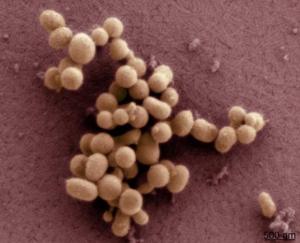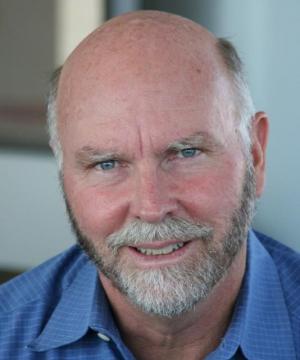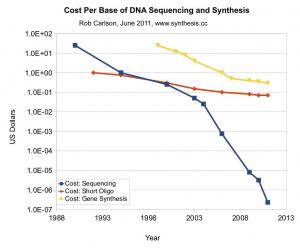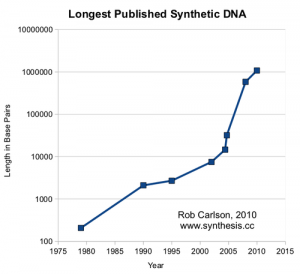‘A very long time ago on our distant planet, we had reached a level of technical and scientific knowledge, comparable to that which you will soon reach. Our scientists had started to create primitive, embryonic forms of life, namely living cells in test tubes. Everyone was thrilled by this.’
(The Book Which Tells The Truth, Chapter 2, Genesis)
 It is a very exciting time to be a Raelian on planet Earth! We have the extraordinary privilege to witness our humanity follow the steps of our creators, as more and more scientific achievements confirm the Message of the Elohim and suggest that we are on our way to one day become Elohim ourselves. One of the most important of such scientific breakthroughs in the last 40 years was the first creation of synthetic life by Craig Venter's team in 2010.
It is a very exciting time to be a Raelian on planet Earth! We have the extraordinary privilege to witness our humanity follow the steps of our creators, as more and more scientific achievements confirm the Message of the Elohim and suggest that we are on our way to one day become Elohim ourselves. One of the most important of such scientific breakthroughs in the last 40 years was the first creation of synthetic life by Craig Venter's team in 2010. The culmination of 15 years of pioneering research and a remarkable technical accomplishment, it's above all a major milestone in the history of mankind, with far reaching social and philosophical implications. For the first time, it was demonstrated that there is nothing supernatural about life, that a living cell could be created using synthetic DNA. Humans have become gods, capable of creating and manipulating life.
The culmination of 15 years of pioneering research and a remarkable technical accomplishment, it's above all a major milestone in the history of mankind, with far reaching social and philosophical implications. For the first time, it was demonstrated that there is nothing supernatural about life, that a living cell could be created using synthetic DNA. Humans have become gods, capable of creating and manipulating life.This work was made possible thanks to the plummeting costs of both DNA sequencing and DNA synthesis (the reading and writing of DNA), as well as technological advances allowing the synthesis and assembly of increasingly longer DNA fragments.


Obviously, the first synthetic bacterium was just a first step in creating new life forms. In the long term, this new technology has the potential to lead to an explosion of exciting new achievements at the service of humanity, such as the creation of new forms of animal pets and even biological robots.
Suggested videos:
TED - Craig Venter unveils "synthetic life"
CBS - J. Craig Venter: Designing Life
Scientific references:
Gibson, D. G., Glass, J. I., et al.
Creation of a Bacterial Cell Controlled by a Chemically Synthesized Genome
Science. 2010 Jul 02; 329(5987): 52-6.
Gibson, D. G., Benders, G. A., et al.
Complete Chemical Synthesis, Assembly, and Cloning of a Mycoplasma genitalium Genome
Science. 2008 Jan 24; 319(5867): 1215-20.
Lartigue, C., Glass, J. I., et al.
Genome Transplantation In Bacteria: Changing One Species to Another
Science. 2007 Aug 03; 317(5838): 632-8.
Smith, H. O., Hutchison, C. A., 3rd, et al.
Generating a Synthetic Genome by Whole Genome Assembly: PhiX174 Bacteriophage from Synthetic Oligonucleotides
Proc Natl Acad Sci U S A. 2003 Dec 23; 100(26): 15440-5.


